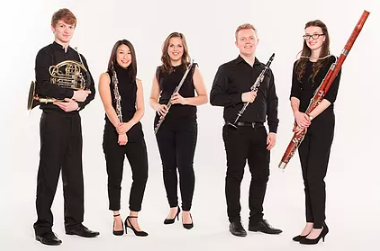At Stephen's Dulwich
College Road
London SE21 7HW
Baritone Jon Stainsby, clarinettist Anthony Friend and string orchestra Concordium present Stephen Dodgson’s vividly autumnal and darkly quirky cantata Last of the Leaves alongside Gerald Finzi’s clarinet concerto and Leoš Janáček’ Suite for Strings, under the baton of Lucy Goddard. Last of the Leaves sets four poems by Austin Dobson, Ernest Rhys, G.K. Chesterton and Harold Monro with prevailing themes of mortality intertwined with or depicted by nature and country life.

Jon Stainsby (photo: Neil Hanson)
Programme
Janáček – Suite for Strings
Dodgson – Last of the Leaves – Cantata for Bass, Clarinet & Strings
- The Rose and the Gardener (Austin Dobson)
- The Leaf Burners (Ernest Rhys)
- The Donkey (G.K. Chesterton)
- At a Country Dance in Provence (Harold Monro)
Finzi – Clarinet Concerto
Stephen Dodgson’s notes on Last of the Leaves:
‘In 1973, I had been commissioned to supply what was a speciality of the Cookham Festival – a children’s opera. Mine was called The Miller’s Secret, Libretto by Patric Dickinson. In 1975 there was a follow-up in the shape of Last of the Leaves, first performed that May in Cookham Parish Church, with Graham Sorrell and Prudence Whittaker as soloists, and conducted by Christopher Finzi.
Central to my choice of the four poems was Ernest Rhys’s dramatically striking equation of man’s mortality with a hillside bonfire of autumn leaves, darkened by marching echoes of the first world war.
In the first song, the Rose which blooms and fades within a few hours of the ancient Gardener’s life, was a conceit of Fontenelle (1657–1757), who proved his philosophical tenet that all feeling is a danger to health and happiness by surviving to his 100th year. I have caused this little fable to show its own endurance by making a haunting return at the very end of the cantata to evoke the sudden solitude of the unnoticed English tourist (whom many books have already made sad) as the Provençal dancers go off to quench their thirst. Only the third song stands outside this prevailing autumnal mood. Palm Sunday from the Donkey’s viewpoint, in Chesterton’s wry and brilliant epigram, is connected with the title only by the palm fronds of its last line. But what an image! The clarinet’s capacity for plaintive braying readily decided its role in this tableau. Elsewhere it acts the part of a bystander, a figure in the middle distance so to speak, whereas the singer very much occupies the foreground, an intimate communicator even when excitedly entreating the dancers to admit him as a comrade. I regard this Cantata as a turning-point in my quest for expressive directness coupled with economy of means.’






